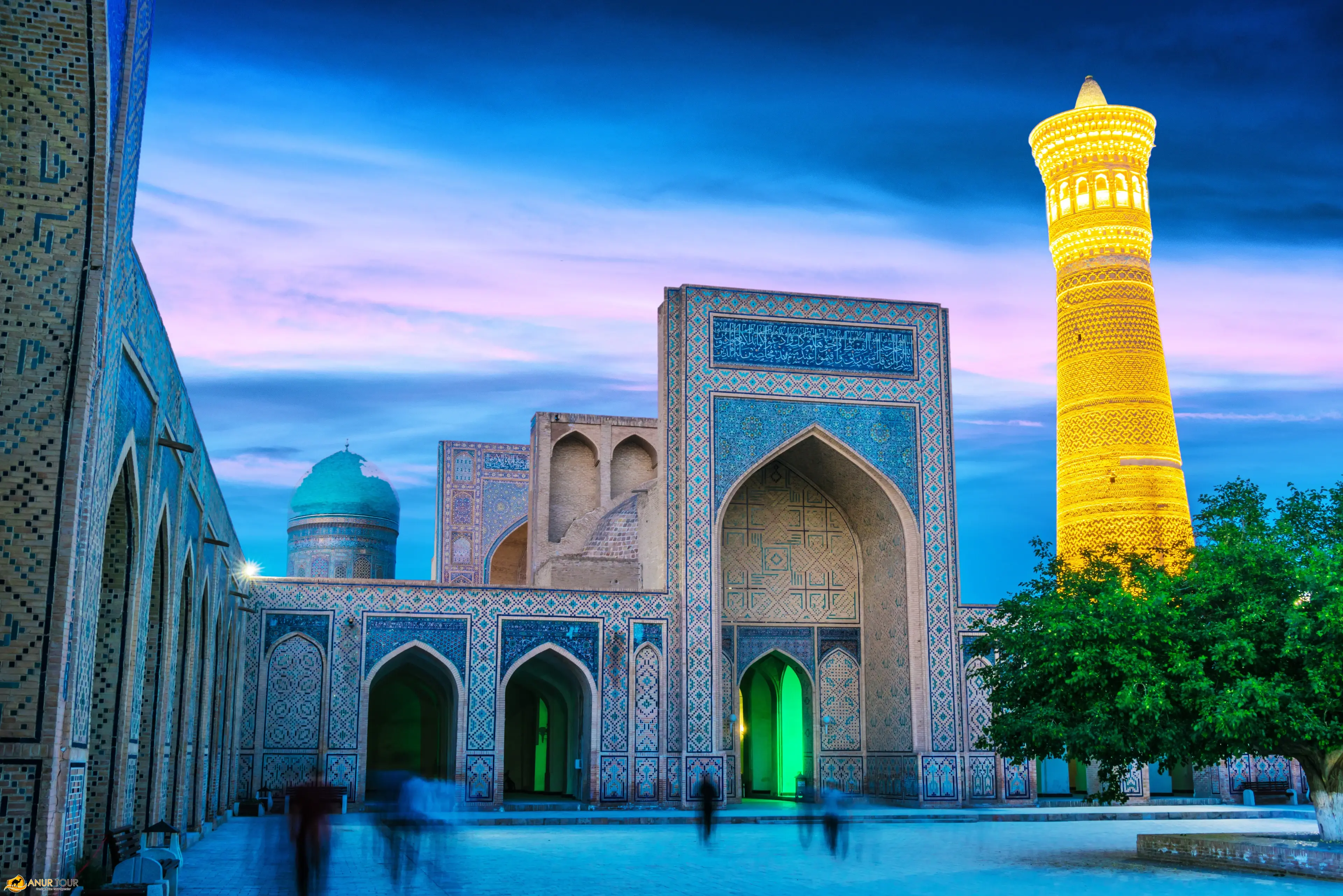
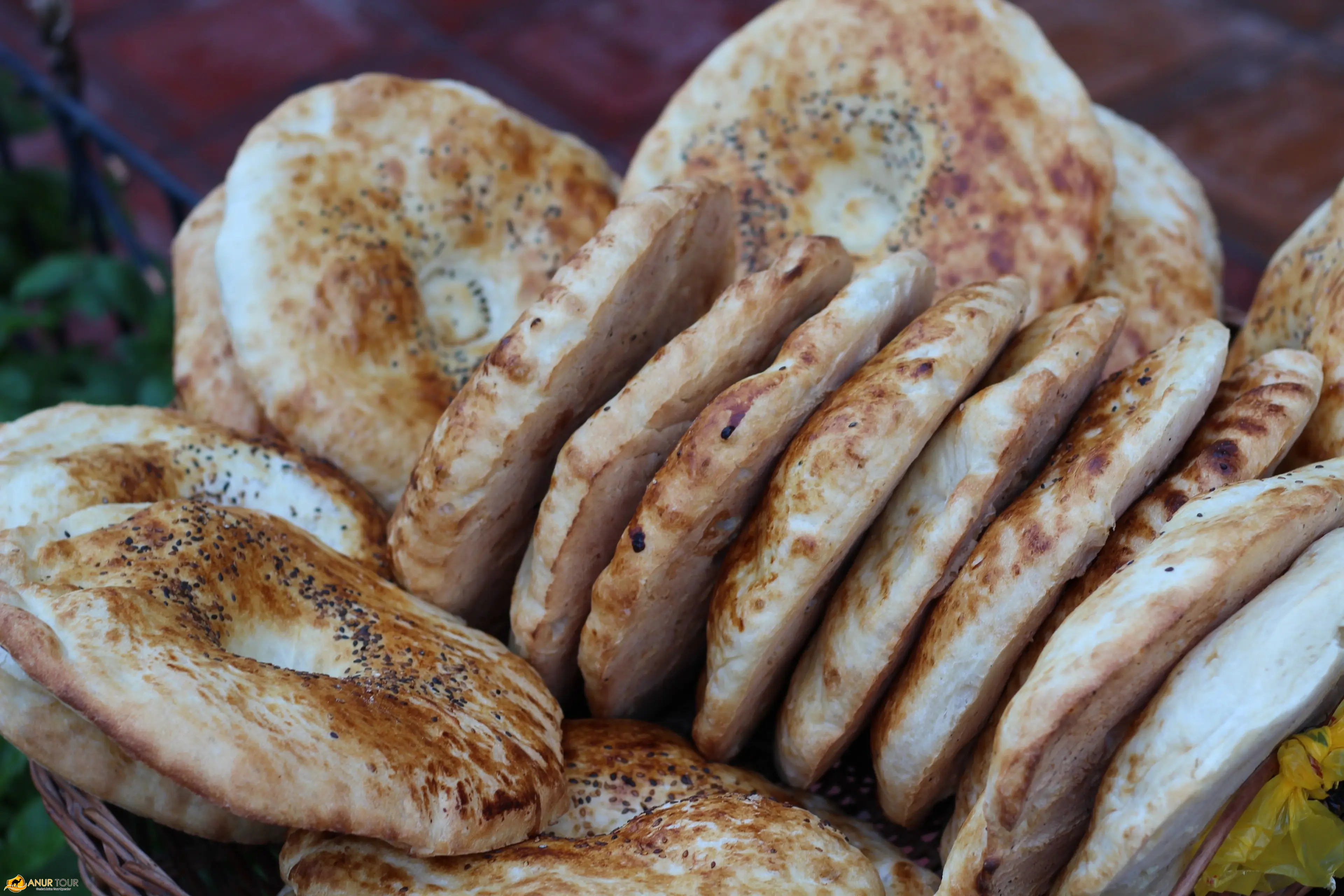
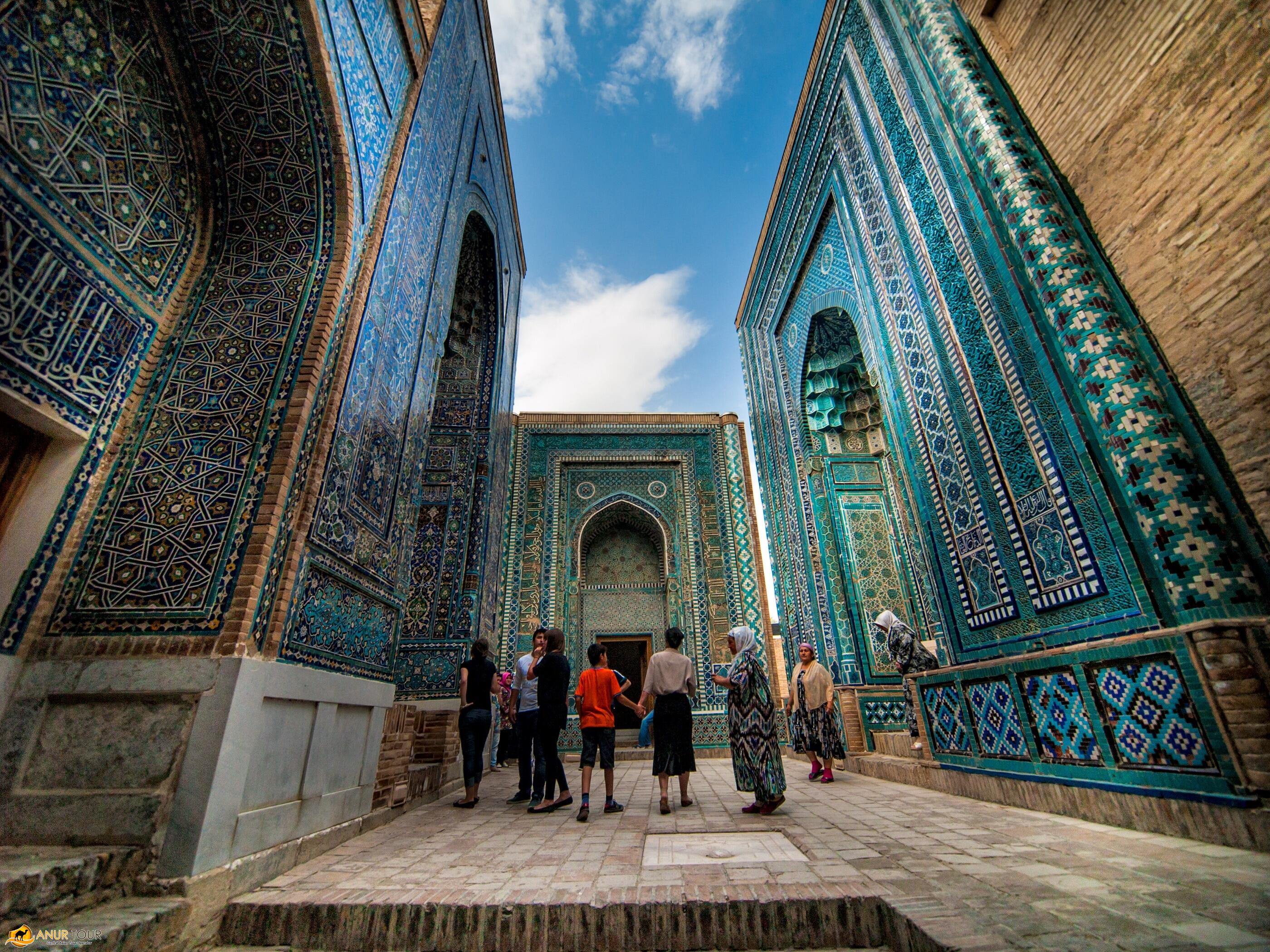
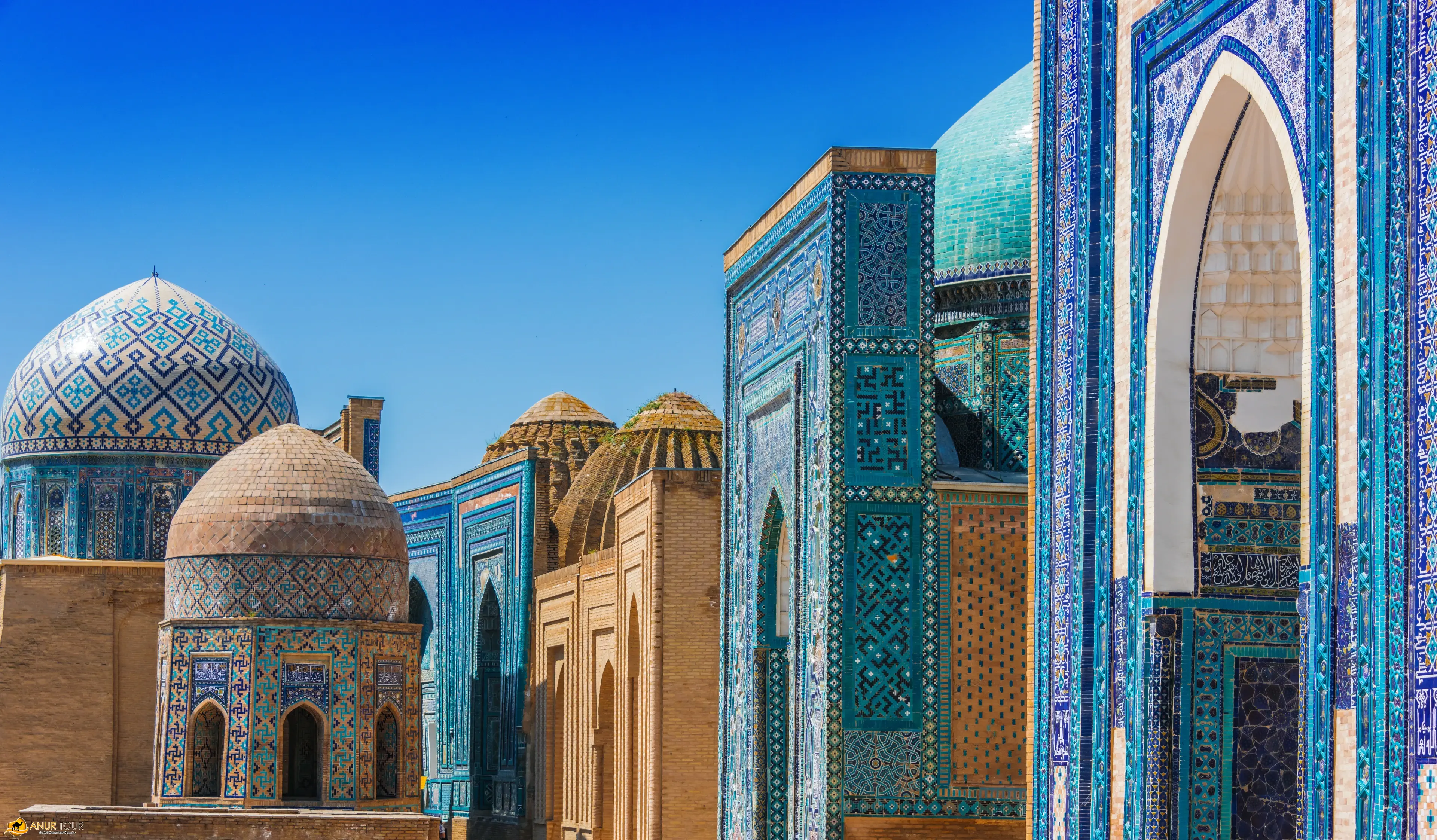
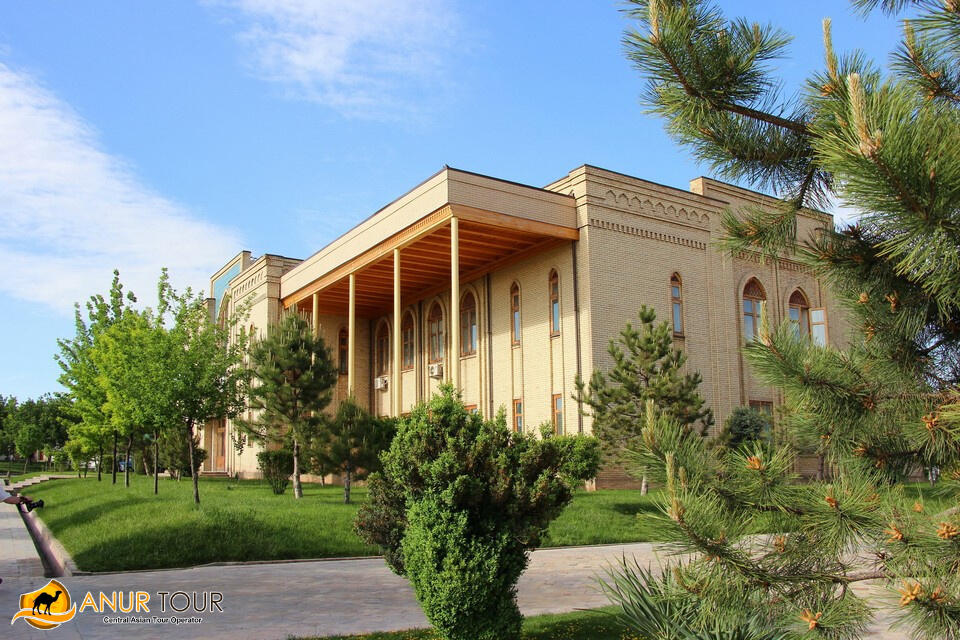
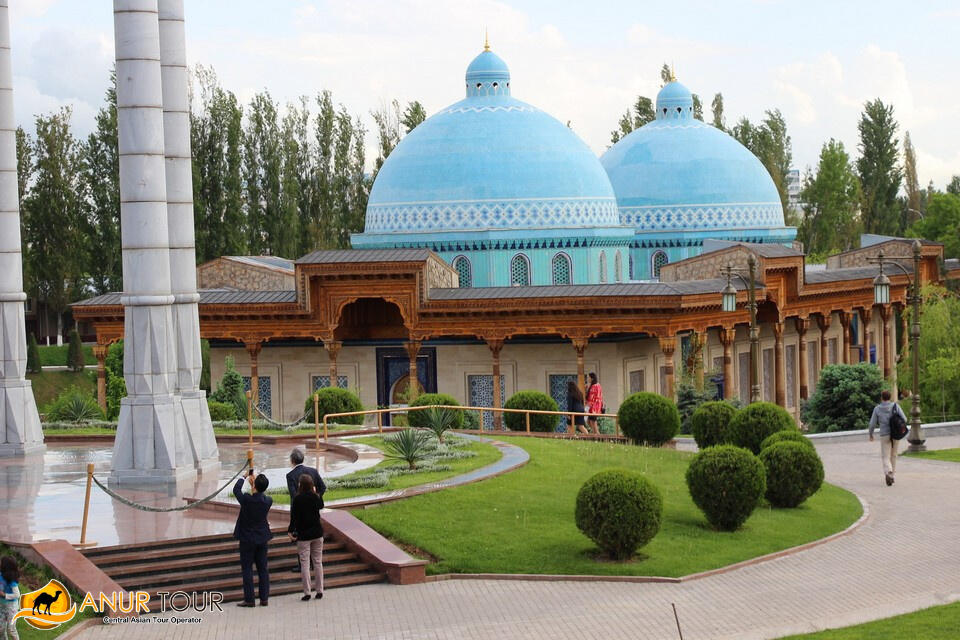
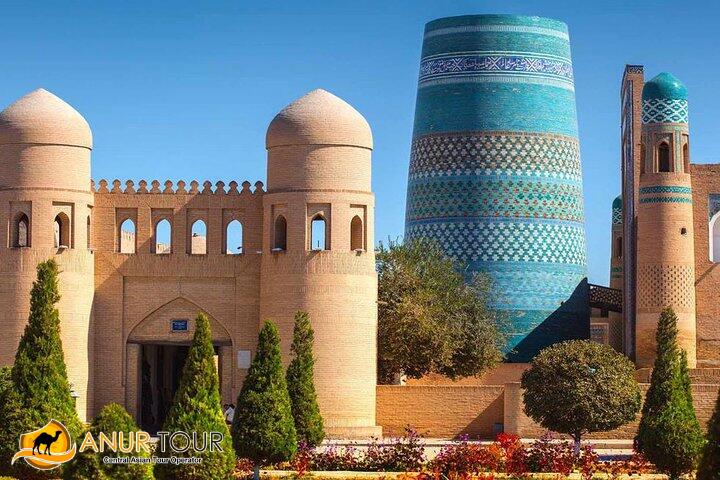







14 day Uzbekistan – Tajikistan tour covers most of the historical places of Uzbekistan, a round trip to Penjikent – Khujand and Fergana valley. Enjoy beautiful nature of mountains and lush valleys and get acquainted with culture and traditions of Central Asia.
This program is designed for families, groups, and cultural travelers who want to combine sightseeing with authentic experiences. With professional guides, reliable transfers, and comfortable accommodations, every detail is arranged for a smooth and memorable journey.
Flight to Tashkent.
Afternoon/evening arrival in Tashkent International Airport.
Migration formalities usually take 20 min to 60 min: visa/passport control and baggage claim. Come out of the terminal and meet the staff holding a sign “ANUR TOUR” .
Transfer to the hotel. As Tashkent airport is not far from the city center, the transfer will take about 20 – 40 minutes depending on the hotel location.
Arrival in the hotel. Check-in.
Resting time in the evening. Overnight at the hotel.
Early breakfast at the hotel.
06:00 Transfer to the local airport.
07:25 Flight to Urgench by HY51.
08:55 Arrival in Urgench Airport.
Come out of the terminal and meet with our driver.
Transfer to Khiva (30 km) hotel to drop off the bags. Standard hotel check-in at 14:00.
Meet the guide and start walking excursion in the historical part of Khiva – Ichan-kala (translated as “Inner town”). Ichan-kala - the largest Museum in the open air in Central Asia:
- Ata-Darvaza, Kunya- Ark;
- Madrassah of Muhammad Rahim Khan;
- Madrassah of Muhammed Aminhan;
- Kalta Minor, the Palace of the Allakulihan Khan of Khiva;
- Tash Hauli, where the harem of 40 concubines was;
- Caravanserai and Tim Allakulihan;
- Mausoleum of Seyd Allaudin,
- Islam-Khoja Madrassah - was built in 1908 by Islam-Hoja of the Prime Minister of Khan. The minaret is a symbol of the country, is an early example of the architecture of the XIV century.
- Mosque and Jami Minaret.
Resting time in the evening. Overnight at the hotel.
Breakfast in the hotel.
09:00 Meet the guide in the lobby.
Start walking excursion in the historical part of Khiva – Ichan-kala (translated as “Inner town”). Ichan-kala - the largest Museum in the open air in Central Asia consisting of :
- Ata-Darvaza, Kunya- Ark;
- Madrassah of Muhammad Rahim Khan;
- Madrassah of Muhammed Aminhan;
- Kalta Minor, the Palace of the Allakulihan Khan of Khiva;
- Tash Hauli, where the harem of 40 concubines was;
- Caravanserai and Tim Allakulihan;
- Mausoleum of Seyd Allaudin,
- Islam-Khoja Madrassah - was built in 1908 by Islam-Hoja of the Prime Minister of Khan. The minaret is a symbol of the country, is an early example of the architecture of the XIV century.
- Mosque and Jami Minaret.
Resting time in the evening. Overnight at the hotel.
Breakfast at the hotel.
Transfer Khiva to Bukhara by car (475 km, 7 hrs) via Kyzylkum desert OR transfer by train (depending on train schedule).
07:15 Transfer to the railway station in Khiva.
08:23 Departure for Bukhara by train.
13:35 Arrival in Bukhara.
Come out of the terminal and meet the driver.
Transfer to the hotel.
Resting time in the afternoon/evening. Overnight at the hotel.
Breakfast at the hotel.
09:00 Meet the guide in the lobby.
Start WALKING sightseeing program in Bukhara (5-6 hours):
- Ensemble Lyabi Hauz (Nadir Divanbegi Madrassa, Khanaka, Kukeldash Madrassa and the monument of Khodja Nasreddin);
- Magoki Attari Mosque is one of the oldest mosques survived in Bukhara from the time before the Mongolian invasion;
- Abdullakhan’s Tim with numerous handicraft shops of souvenirs, ceramics, national clothes, and carpets;
- Caravanserai Sayfuddin (the Center of Handicraft Development of Bukhara);
- There are three trading domes or so called covered bazaars Toki Sarrofon, Toki Telpak Furushon, and Toki Zargaron preserved from the XVI century and these bazaars were the centers for trade of silk, jewelry and even for money exchange. Today as well, one can enjoy and purchase different souvenirs of a wide range, from small souvenir magnets to the famous Bukhara carpets;
- Visit Ulugbek and Abdulazizkhan Madrassas or so-called Kosh (pare) madrassas opposite each other with the distinctive style of facade ornamental decoration;
- Poi Kalon Square with Kalon Minaret and Mosque, Mir Arab Madrassa – the heart of Bukhara, a monumental complex impresses the imagination;
- Ark Fortress – the oldest citadel dating back to I century BC where one can feel the history of the great fortress covered in beautiful legends and myths.
Optionally can be added by request:
Visit Samanids mausoleum (IX century), a monument of early medieval architecture.
Resting time in the evening. Overnight at the hotel.
Breakfast at the hotel.
Free time in Bukhara, morning at leisure.
Afternoon transfer to Samarkand, en- route visiting famous Gijduvan pottery workshop where visitors are welcome for a tour around the workshop and observe the process of ceramic making and painting.
The owners demonstrate the stages of making ceramics from turning the potter’s wheel to making paints from natural ingredients, decorating the ceramics in a distinctive style, drying and firing. Take a tour around the museum-hall of ceramic masterpieces with a unique collection of the ceramic items of Gijduvan and other regions of Uzbekistan.
By request, a master-class of painting ceramics, suzani embroidery and traditional bread baking.
Continue to Samarkand.
Arrival in Samarkand in the afternoon, check in the hotel.
Resting time in the evening. Overnight at the hotel.
Breakfast at the hotel.
09:00 Meet the guide and driver at the hotel in Samarkand.
Start Samarkand sightseeing tour visiting :
– Gur Emir Mausoleum – a burial vault of Timur the Great and his descendants decorated with gold ornaments and considered as one of the most significant places in the world;
– Continue to the famous Registan Square – the heart of Samarkand and a real masterpiece of Central Asian medieval architecture consists of three grandiose buildings: Ulughbek Madrassa, Madrassa Sherdor, and Madrassa Tilla Kori.
– Bibi Khanim Mosque – the biggest medieval building in the city which was one of the most magnificent mosques in the Islamic world in the 15th Century;
– Shahi Zinda Necropolis – unique complex of Mausoleums formed by standing on both sides of the cenotaph (an imaginary grave) belonging to the Muslim person named Saint Abbas ibn-Kussam;
– Ulugbek’s Observatory – the finest astronomical center in the medieval world was built by order of Ulugbek, an outstanding scholar and astronomer;
Transfer to the hotel.
Resting time in the evening. Overnight at the hotel.
Breakfast at the hotel.
09:00 Meet the guide at the hotel lobby.
Start sightseeing tour in Samarkand countryside visiting:
- Mausoleum of Khoji Doniyor known also as Saint Daniel.Khoja Donier is considered as a saint patron of Samarkand, people believe that a visit to the mausoleum can bring health and success; many visitors come here to make wishes near the almond tree. A holy spring is located at the foot of the hill of the mausoleum; people claim the water has healing and miraculous properties.
- Paper factory ”Meros” in Konigil village produces unique paper that can be preserved for more than and is used in craftworks,
- Carpet factory “Hudjum” to observe the process of the finest carpets weaving.
Transfer to the hotel.
Resting time in the evening. Overnight at the hotel.
Breakfast at the hotel.
08:30 Transfer to border Jartepa. Border crossing usually takes 30 min- 1 hr.
Meet the guide and driver at Tajikistan part of the border.
Transfer to Penjikent - an ancient town in Sogdiana and now it is a city in the Sugd province of Tajikistan on Zeravshan River.
Start excursion in Penjikent visiting:
- The Sarazm Important Bird Area (UNESCO World Heritage) lies downstream of the city on the tugay -vegetated floodplain of the river.
- The archaeological site of the ruins of old Penjikent - a walled inter-city (2500-years ago) - was once a Sogdian trading city on the Silk Road. Today, only ruins are left owing to the fact that the main construction material was clay-bricks.
Transfer to Khujand via Istaravshan town.
Located in the northern foothills of the Turkistan mountain range, 78 km southwest from Khujand, Istaravshan is one of the most ancient cities of Tajikistan (more than 2500 years). Ancient name Cyropolis founded by Cyrus the Great in 544 BC as a boarding fort of the Achaemenid Empire.
During the Soviet era, the city was known as Ura - Tyube.
Overview sightseeing in Istaravshan visiting:
- Mazori Sharif mausoleum,
- Kog Gumbaz madrasa (16th century)
- Kuhi Mug, the ruins of the ancient fortress.
Transfer to Khujand.
Resting time in the evening. Overnight.
Breakfast at the hotel.
09:00 Start sightseeing tour in Khujand:
- Khujand, the second-largest city and one of the oldest cities in Tajikistan, the furthest point Alexander the Great reached in Central Asia, so the city was named Alexandria Eschate (Alexandria the Furthest).
- Pushkin square with Kamoli Khudjandi Square;
-Timur Malik’s fortress and Sugd museum;
- Muslihiddin memorial complex;
- Panjshanbe bazaar (The name Panjshanbe comes from Persian language meaning “Thursday”) is one of the oldest markets in Tajikistan;
- Arbob palace.
Resting time in the evening. Overnight.
Breakfast at the hotel.
08:30 Transfer to the border post Patar/Andarhan.
Border crossing to Uzbekistan (takes about 30 min-1 hr), meet the guide and driver at Uzbekistan side of the border. Transfer to Kokand (appr 40 min drive).
Start sightseeing in Fergana valley visiting:
Kokand (mentioned as Khavakand or Kokan derived from a tribal name) is an ancient city that due to favorable location was one of the convenient fortified points of caravan routes in the Great Silk Road.
Nowadays, Kokand is a modern town at the crossroads of Tashkent, Fergana valley to Andijan and the other route to Khujand (Tajikistan) and is considered as one of the most important pre-border points.
Start sightseeing tour around Kokand visiting:
- Khudoyar - Khan Palace of 19th century is listed in the world heritage of UNESCO, at present days houses Kokand Regional History Museum that exhibits a unique collection of more than 3000 artifacts from ancient, khanate and tsarist periods of the region.
- Norbut - Biy Madrassah, the largest madrassa in Kokand. The madrassa was built in XVIII century by captured architects as well as the famous Bukharian architect Usto Muhammed Salih Kasim, so the design and construction is quite typical to some monuments of XVIII Century in Bukhara.
- Modari Khan Mausoleum (Modari - khan means “Mother of Khan”) was built in 1825 by order of the widow of Umarkhan, famous poetess Nodira to honor the tomb of her mother-in-law. Since then the mausoleum became the family mausoleum where most of the female members of khan family were buried.
- Rishton (50 km west of Fergana) famous all over the world for its pottery that is decorated according to ancient tradition that is more than 800 years. Masters hand down their trade secrets from father to son. The unique red clay ceramic masterpieces are decorated with naturally made ultramarine, turquoise and azure ornaments known as blue glaze "ishkor".
- Workshop of the famous potter Rustam Umarov where visitors are welcome to observe the finest Rishtan ceramics in wonderful hand made and painted tea sets and lagans and beautifully decorated jugs and vases.
Transfer to Fergana.
Resting time in the evening. Overnight.
Breakfast at the hotel.
09:00 Meet the guide at the lobby. Continue sightseeing in Fergana valley:
- Fergana is a relatively young city that was founded as a strategic fortified point in Turkestan in 1876 during tsarist period of the region. The town was initially called as New Margilan, further in soviet period renamed as Fergona in 1924. Nowadays, Fergana is a flourishing beautiful town and despite its young history became the central point of Fergana valley.
- Visit Ahmad Al-Fargoni monumental complex;
- Continue to Margilan. Margilan (“Marg” from Persian green grass, “lon”- “place“) was inhabited settlement in Fergana valley since IV-III Centuries BC, the town was well known for its crafts and finest silk fabrics from the Great Silk Road period up to now.
- Said-Ahmad Hodji Madrassah where craftsmen produce original silk carpets,
- Silk factory Yodgorlik where visitors are welcome to observe the process of silk manufacture with traditional decoration “ikat”.
15:00 Transfer to the railway station in Margilan.
16:03 Departure for Tashkent by train "O'zbekistan".
21:17 Arrival in Tashkent.
Come out of the terminal and meet driver. Transfer to the hotel.
Resting time in the evening. Overnight at the hotel.
09:00 Meet with a guide.
Start sightseeing tour of Tashkent (5-6 hrs) visiting old and new parts of the city:
- Amir Timur Square, founded in 1882 and originally called Konstantinovsky Square, was renamed on August 31, 1994 after the Amir Timur to honor the cultural and historical contribution of the great conqueror.
Around the Square, there is the Museum of History of Timurids, Uzbekistan hotel, Forum Palace, and famous Tashkent striking clock.
- Tashkent striking clock, one of the major symbols of Tashkent.
- Theater Square with the Opera House: State Academic Theater of Uzbekistan named after Alisher Navoi built in 1947 is one of the best opera theater of the world performs both classical and national repertoires.
- Independence Square, the main square of Uzbekistan reflects the past, present, and future of the country. There are fountains standing for the life energy of Uzbek people, the Cabinet and the Senate, the “Eternal flame" in honor of soldiers who died during the Second World War.
- Earthquake Memorial, the composition is devoted to the tragic date of earthquake in Tashkent on April 26, 1966, and is erected in the approximate place of the earthquake epicenter. Residents still come to the monument to honor those people who took a part in the reconstruction of Tashkent;
- Khast Imam Square – a religious center of the city consisting of the Barakkhan madrasah; Kaffal Shashi Mausoleum and the library of Islamic Literature with the Holy Koran Book of the VII century (original Quran Othman). Khast Imam is one of the most significant spiritual centers in Central Asia and attracts pilgrims and visitors all over the world.
- Chorsu bazaar – the ancient bazaar of Tashkent. “Chorsu” means “four waters”, symbolically meaning the conjunction of four major parts of the old city in the bazaar where people come for trades. The bazaar beautiful blue dome, built in traditional style after the Tashkent earthquake, is often depicted in postcards and international magazines and became one of the major sights of interest both for locals and guests – one can see oriental tiled bazaar from different souvenir shops with ceramics, handicraft works, carpets and jewelry, the whole pavilion full of delirious fruits to the finest textiles and colorful fabrics.
- Tashkent Metro (the first line was launched in 1977) with beautiful train stations each decorated in thematic style with traditional ornaments and special lightning.
Overnight at the hotel.
Breakfast at the hotel.
Transfer to Tashkent International Airport.
Return flight from Tashkent tomorrow.
End of the tour
Accommodation: